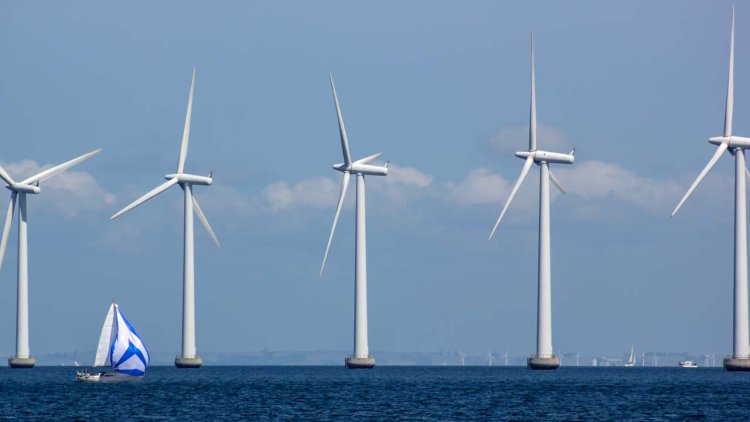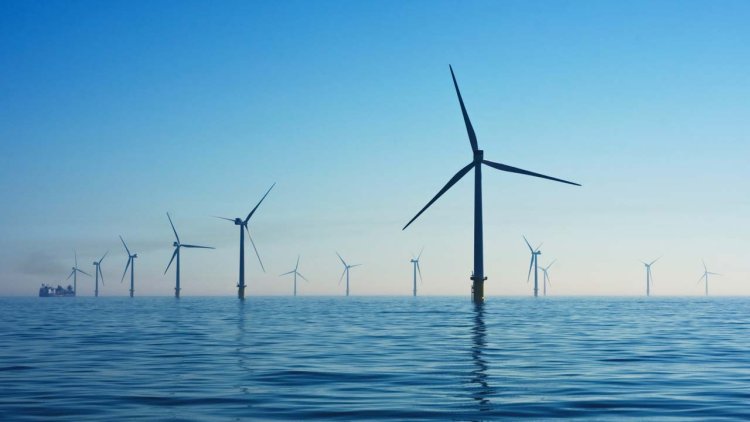ORE Catapult and UIUC join forces on floating wind challenges
Floating wind will likely be a primary source of US offshore wind capacity in the coming decades

The Offshore Renewable Energy (ORE) Catapult is set to bring UK expertise to the development of the US floating offshore wind sector through a collaboration with the University of Illinois Urbana-Champaign (UIUC).
Funded by the US Department of Energy Advanced Research Projects Agency-Energy (ARPA-E) and Innovate UK, and with support from the Energy Systems Catapult, the project aims to create turbine and sector blueprints, map the transatlantic supply chain and lay the groundwork for offshore grid network designs.
Floating wind will likely be a primary source of US offshore wind capacity in the coming decades as much of their estimated 2,000GW capacity lies in deeper water sites that are unsuitable for conventional, fixed-bottom turbines. One of the core challenges is the development of an infrastructure that will be suitable for connecting floating wind turbines to US electrical power grids. The partners will explore the best configurations for direct current transmission in US waters.
Michael Smailes, lead engineer on the project at ORE Catapult, comments:
“More offshore wind developers are exploring the use of high-voltage direct current (HVDC) transmission on the sites that are further away from the shore. Despite the effectiveness of current offshore HVDC systems, they generally require building huge offshore sub-stations that can be as big as the size of football stadiums. We will be looking at scenarios for medium-voltage direct current (MVDC) collection grids across a range of voltage levels. This offers an interesting but untested solution for minimising the size of infrastructure needed; it may even eliminate the need for sub-stations entirely.
“Many challenges remain in designing a suitable MVDC collection system. The work we do under this project will be to determine the art of the possible and the potential cost savings, as well as identifying the remaining unknowns for future research and development.”
The UK is one of the countries vying to lead development of floating wind technologies. ORE Catapult estimates that its own floating wind supply chain could capture £2.3bn per year between 2031 and 2050.

Professor Chong Ng, Head of Applied Research at ORE Catapult added:
“We have one of the most ambitious targets in the world for floating offshore wind in the UK with a hotbed of innovation in this area. This new collaboration opens up a route to the future US market for our innovative technologies.”
Professor Arijit Banerjee, a faculty member in the Department of Electrical and Computer Engineering at UIUC will serve as the principal investigator leading the effort from the US. He said:
“Over the past few years, we have focused primarily on creating power harvesting architectures attractive for the offshore environment. ARPA-E’s support through its OPEN 2018 was crucial to help us reach a stage where we can build a 200-kW prototype of our proposed architecture. This collaboration gives us a new opportunity to look at solutions from a system-level perspective—from the generator to the grid.”
Dr Jennifer Gerbi, ARPA-E Deputy Director for Technology, said:
“ARPA-E sets out to address innovation needs, and that’s exactly what this collaboration aims to achieve in floating offshore wind turbine technology. This partnership seeks to enable the offshore wind industry to ultimately strengthen and diversify the array of domestic energy sources available to Americans and our partners abroad.”
Dr Mario Garcia-Sanz, ARPA-E Program Director, added:
“ARPA-E created the ATLANTIS program to drive forward floating offshore wind turbine technology. Innovate UK and ARPA-E understand that floating wind turbines have the potential to increase the affordability and reliability of wind energy so we can capture more of this emissions-free, renewable energy resource. This collaboration between the ATLANTIS project team at UIUC and the ORE Catapult has great potential to innovate floating wind turbine technology.”



























